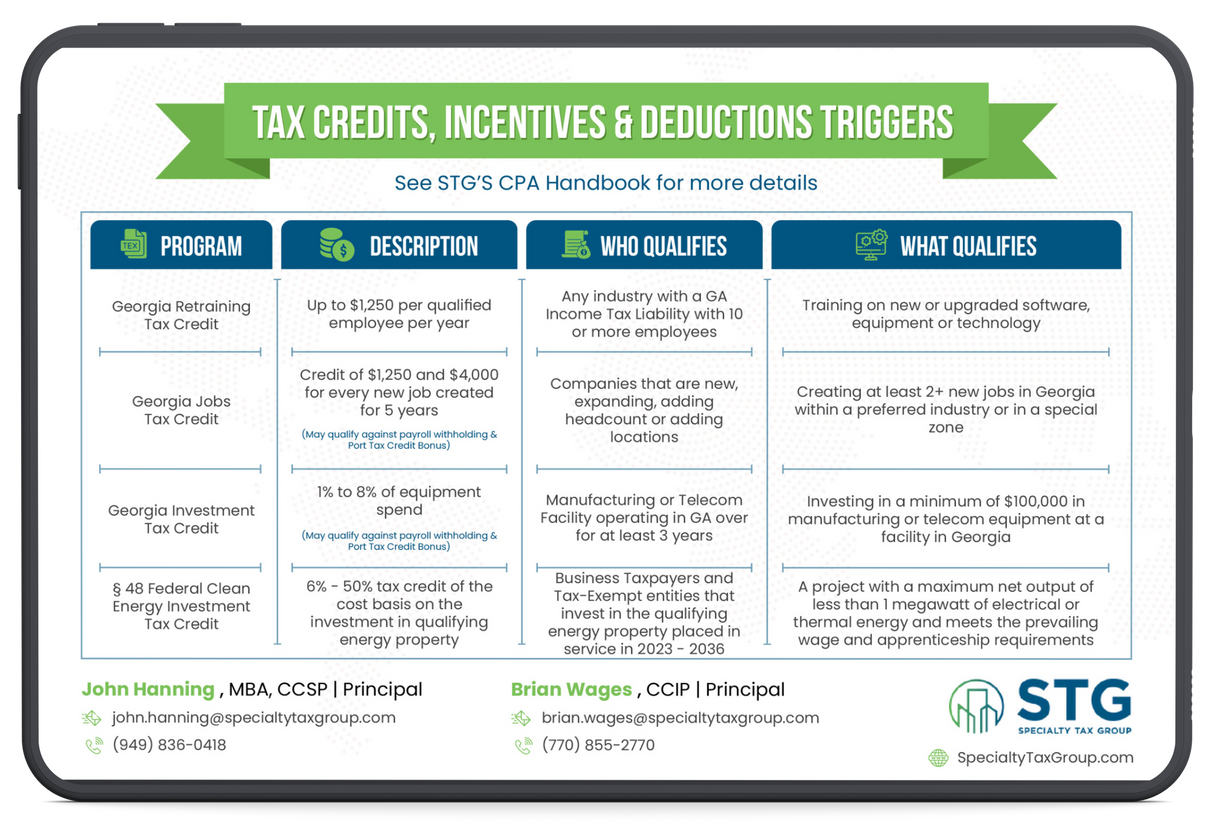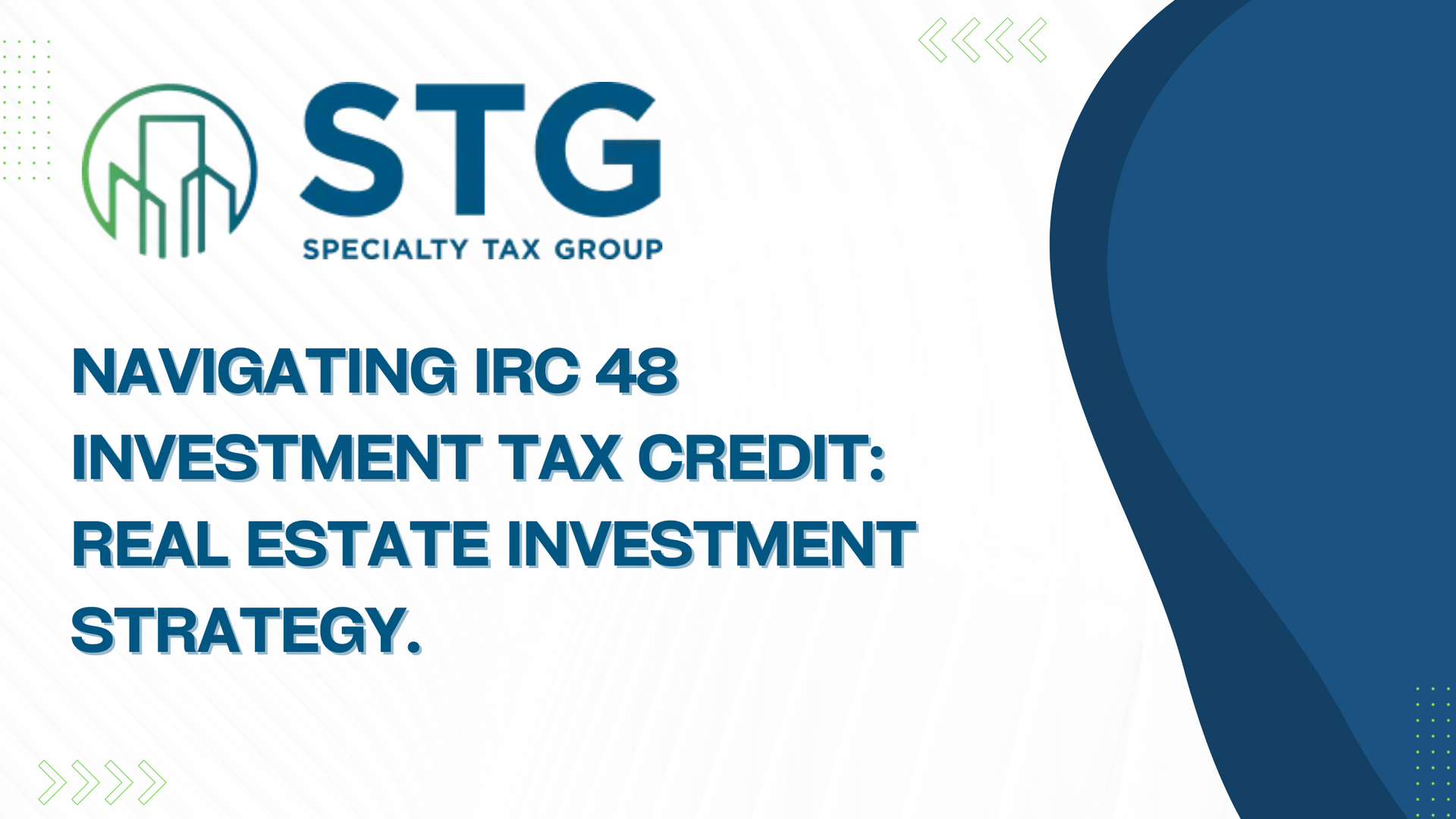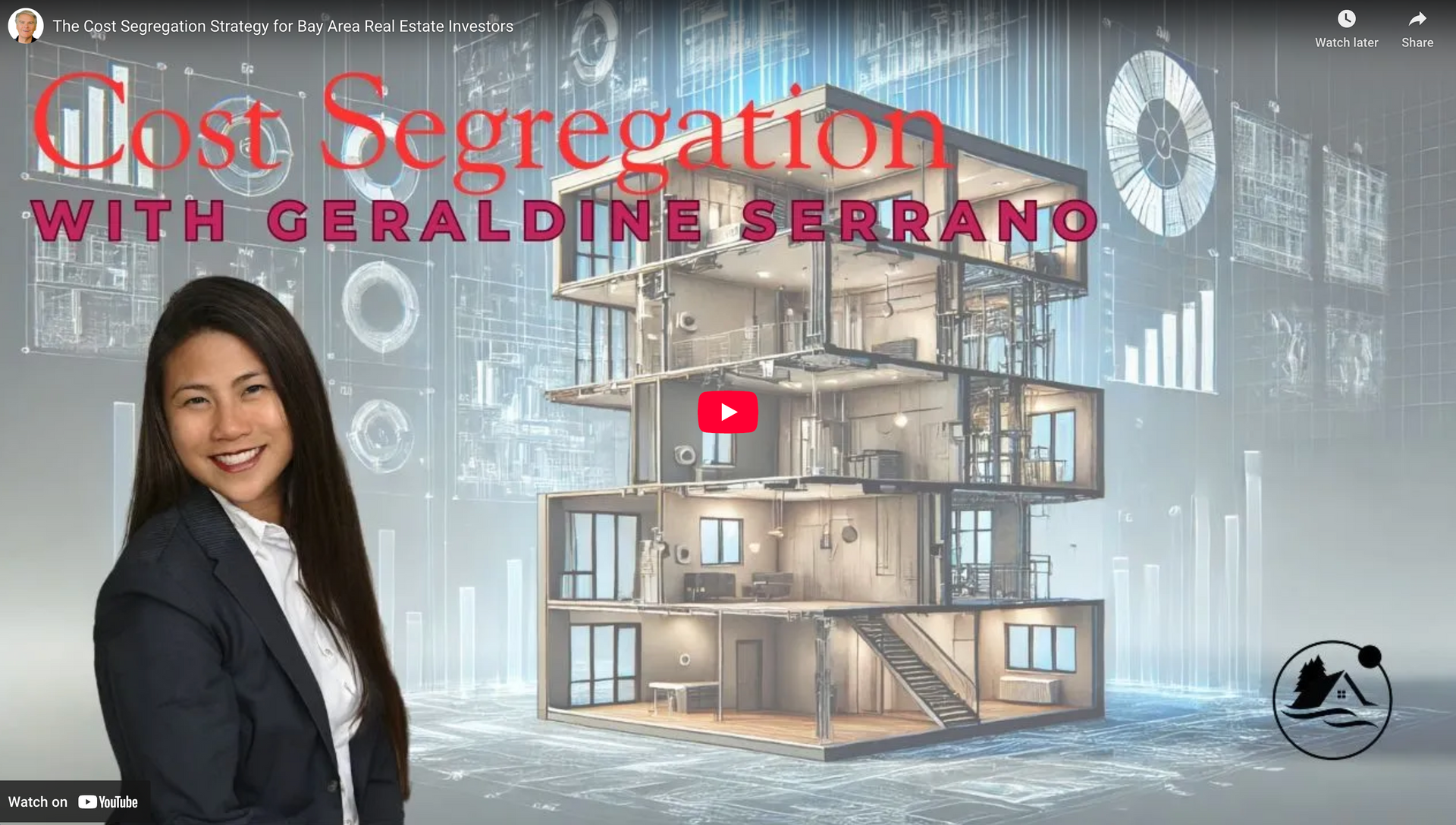This blog post has been researched, edited, and approved by John Hanning and Brian Wages. Join our newsletter below.
Newsletter Form
Are you trying to get more money for your business? Doing a full review of what you own is something many companies do to save money on taxes. The main benefit is it helps you find big savings you didn't know you could get. So it's a really good tax plan, especially if your business requires a lot of equipment or inventory. This includes manufacturers, distributors, retailers and others.

What Is A Comprehensive Fixed Asset Review?
A comprehensive fixed asset review is an in-depth analysis of a company's entire fixed asset register and depreciation schedules. The goal is to identify opportunities to maximize tax deductions and savings by ensuring assets are classified and depreciated correctly according to IRS guidelines.
This review is considered "comprehensive" because it combines several components:
- Physical inspection and tagging of tangible assets
- Reconciliation of fixed asset registers to general ledger
- Analysis of placed-in-service dates, estimated useful lives and depreciation methods
- Review of disposals, retirements, trade-ins and exchanged assets
- Identification of previously unrecorded assets
- Catching missed opportunities for bonus depreciation
- Ensuring proper asset classification (e.g. 179 deductions, listed property)
The end result is an updated fixed asset schedule that applies the optimal depreciation method and life to each asset. This allows businesses to take every tax deduction available and maximize write-offs.
How Does A Comprehensive Fixed Asset Review Increase Capital For Businesses?
The main benefit of a fixed asset review is increased tax savings and deductions, which directly improve a company's cash flow. The extra capital can then be reinvested to fuel growth.
Essentially, the review finds "missed" deductions that have been left on the table. The IRS provides generous depreciation rules to encourage business investments - a comprehensive review ensures these are fully utilized.
Studies show companies can uncover previously missed deductions amounting to 10-30% of asset costs. These tax savings directly hit the bottom line.
With more cash in the bank, companies gain the flexibility to:
- Reinvest in new equipment & technology
- Hire more staff and increase payroll
- Open an additional location to boost revenue
- Pay off expensive loans and reduce interest costs
- Withstand an economic downturn due to extra reserves
For most businesses, staying tax compliant is complex. A fixed asset review provides certainty that all available deductions are claimed. This keeps more working capital in the business rather than being lost to the IRS - critical for growth.
What Studies Are Included In A Comprehensive Fixed Asset Review?
Below are the studies and assessments that your tax specialist will cover in a comprehensive fixed asset review.
1. Individual Asset Review
Your tax specialist will review each individual asset that your business owns, to assess if they have been inappropriately depreciated. Assets which qualify for accelerated depreciation include process-related plumbing, electrical, and ventilation systems.
2. Capital To Expense Studies
The Tangible Property Regulations (TPR) allow taxpayers to retroactively review expenditures that were capitalized but qualify as repair and maintenance expenses, such as replacing roof membranes and HVAC components, and resealing parking lots.
3. Retirement Studies
Your tax specialist will review the depreciation schedules for “ghost assets” that remain as active fixed assets. These are assets that have been removed such as disposed roofs and HVAC components. Taxpayers are allowed to immediately deduct the remaining undepreciated basis.
4. Partial Dispositions
The TPRs now allow taxpayers who make improvements to their facilities to immediately deduct the cost of the removed building components and instantly write-off undepreciated basis amounts.
5. Demolition Costs
Demolition costs for building improvements are often capitalized with the cost of a new asset, but can now be immediately deducted under the new TPRs.
6. Bonus Depreciation
Bonus depreciation allows taxpayers to immediately write off from 30 to 100 percent of the purchase price of a new or used asset, but is often overlooked. This study identifies missed bonus opportunities.
7. Cost Segregation
Under the current IRS regulations, commercial buildings depreciate over 39 or 27.5 years. A cost segregation study carves out components from buildings that qualify for more rapid depreciation, such as land improvements and personal property.
Risks and Limitations
While a fixed asset review can lead to substantial tax savings and capital increase, there are some risks and limitations to consider. The cost of the review can range from $5,000-$15,000 depending on the size of the company. There is also a small possibility that the IRS may disagree with some of the findings and deny certain deductions. However, an experienced tax specialist will ensure everything is completely compliant with regulations.
How Do I Get Started?
To start a comprehensive fixed asset review and the process of increasing your capital, you need to hire Specialty Tax Group. Our tax specialists are experts in finding viable ways for you to save money on deductions and boost your bottom line.
Contact us today!





